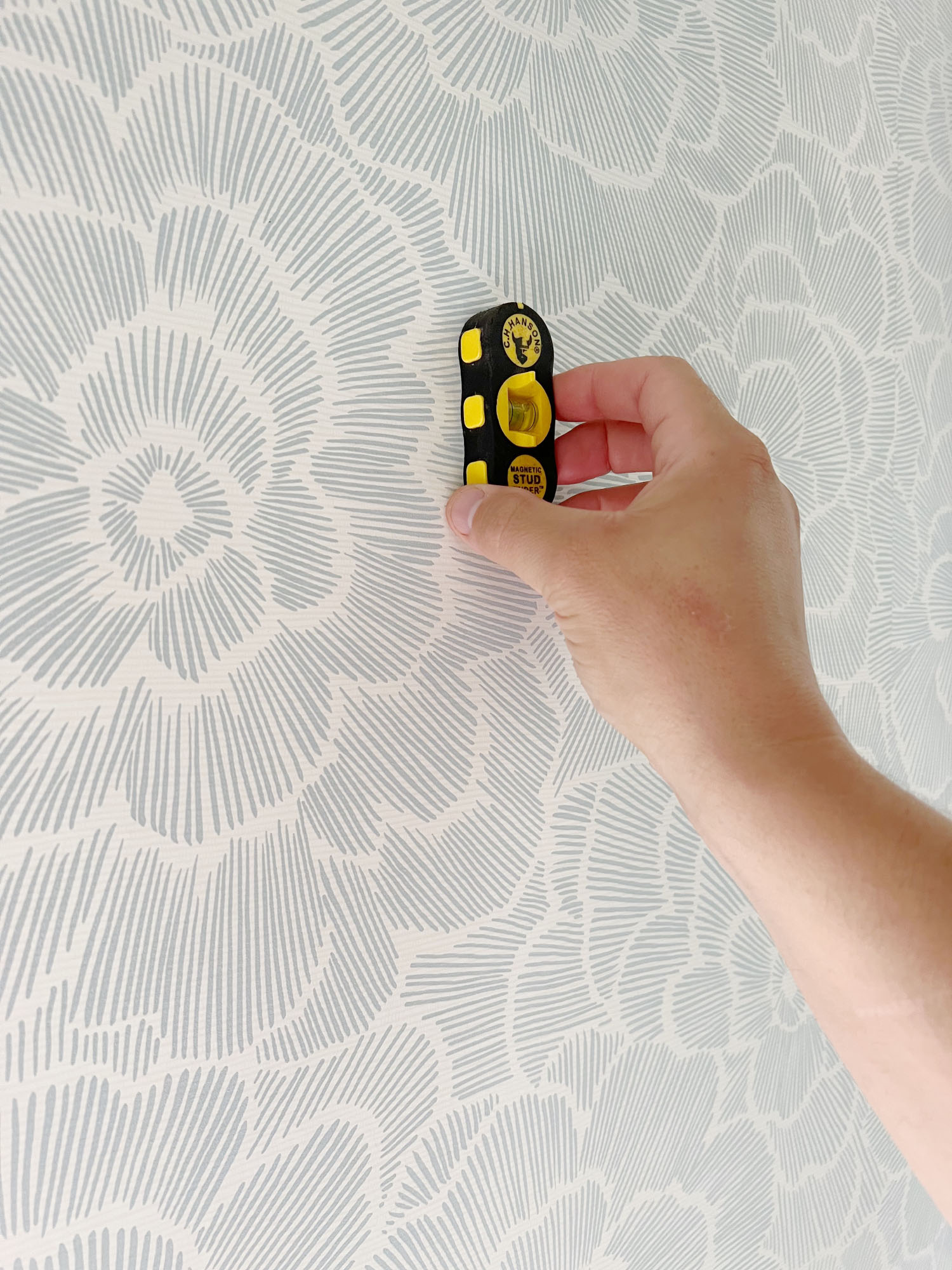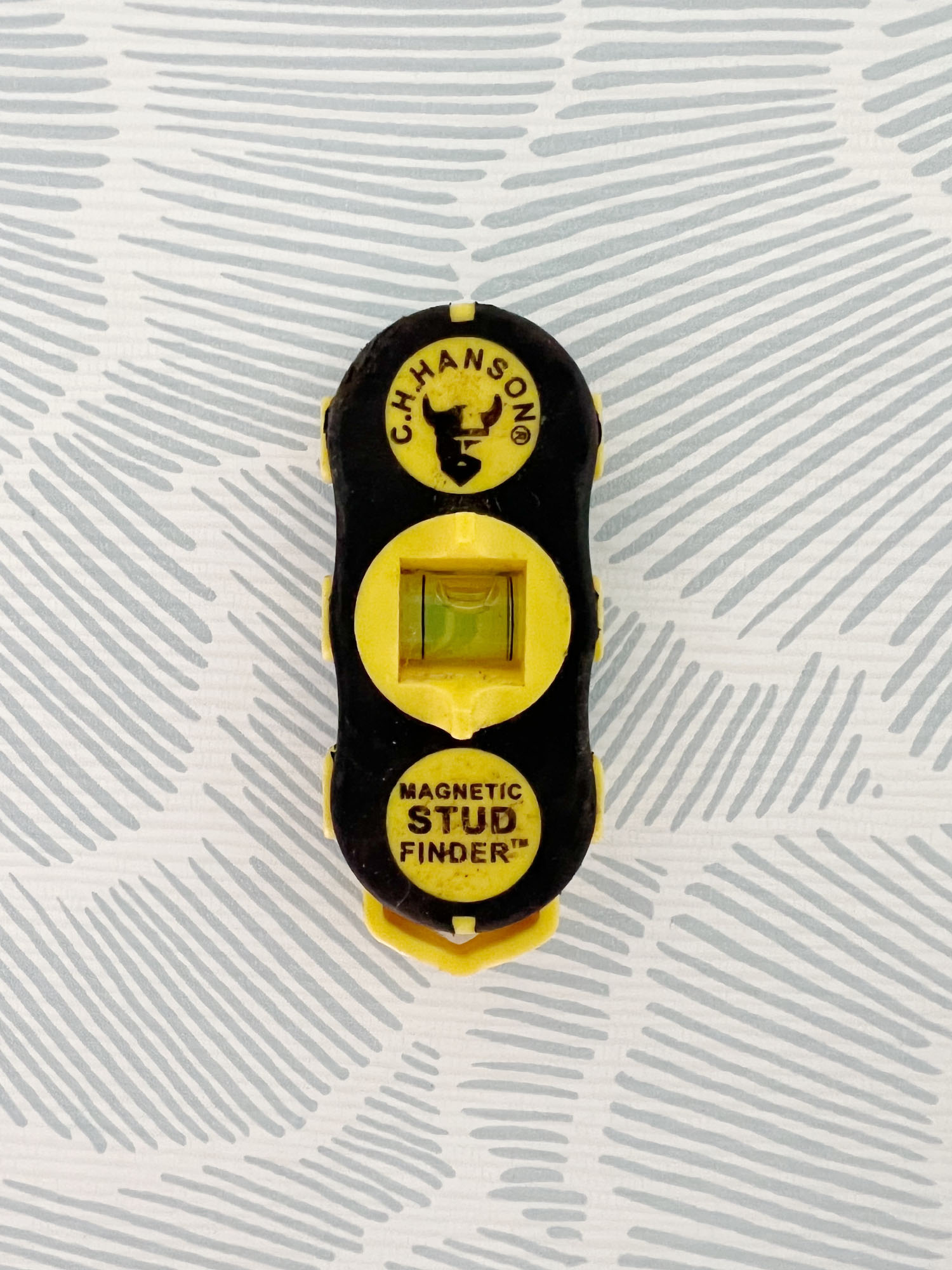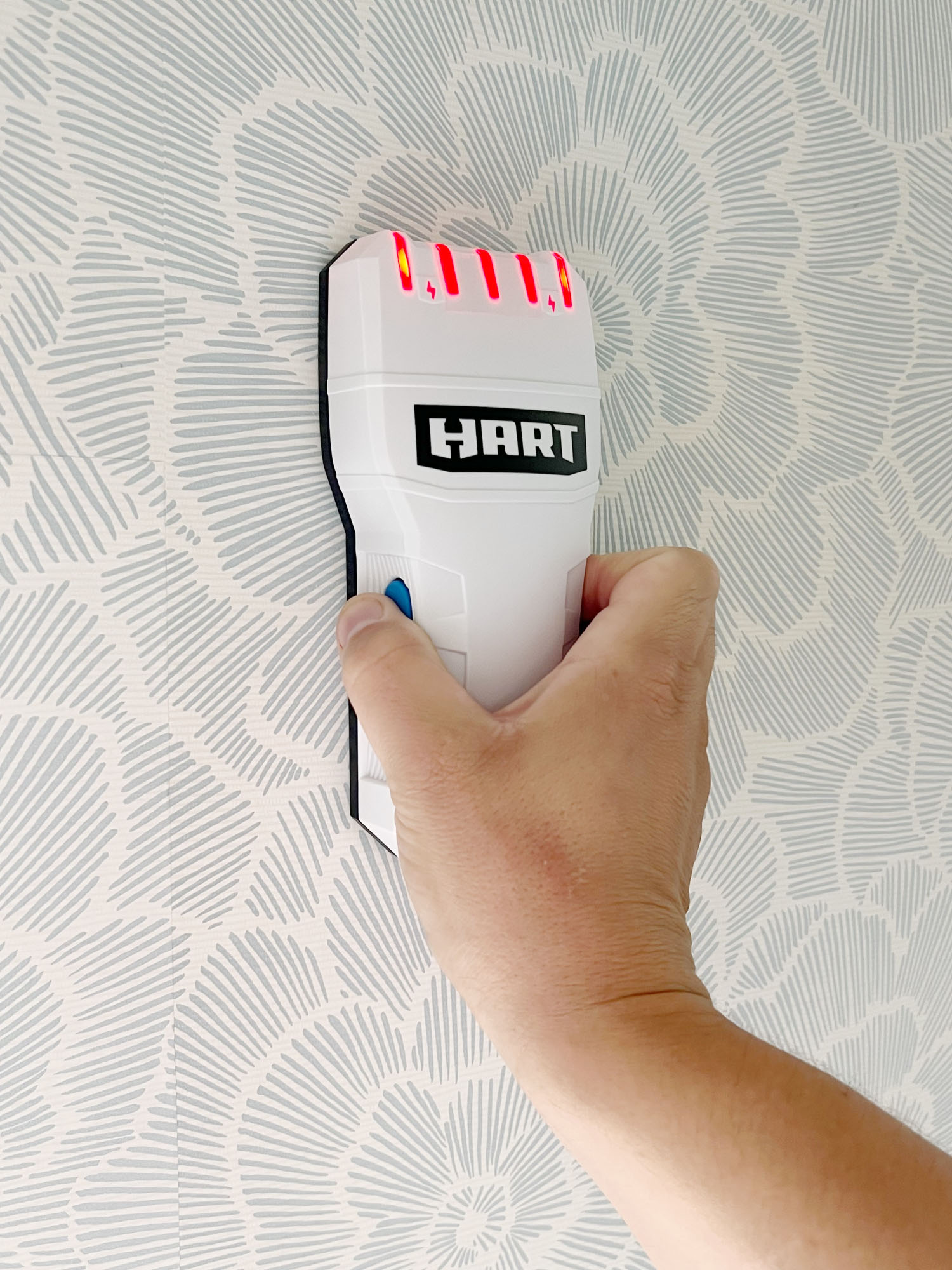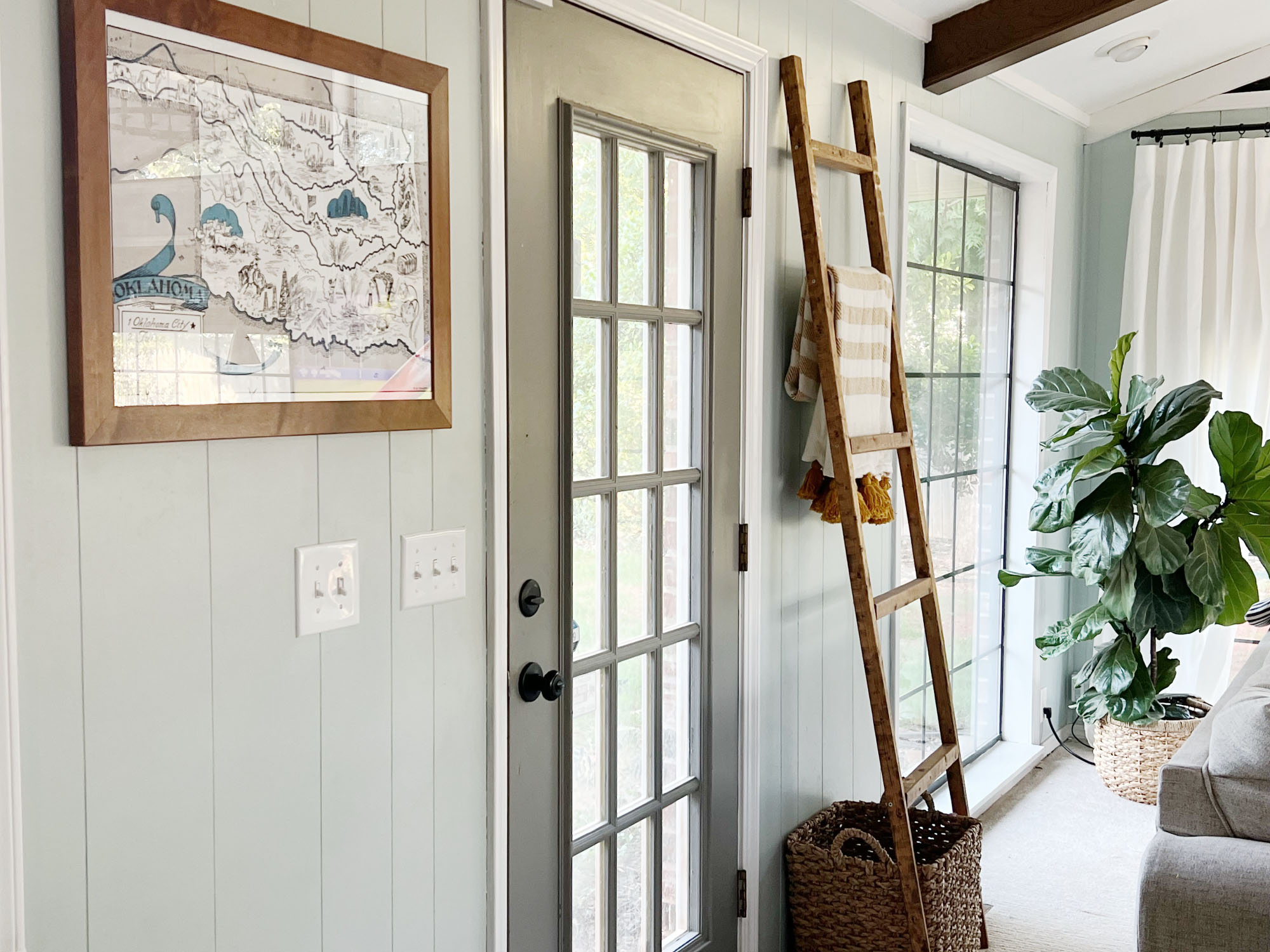

Whether you're displaying artwork or trying to mount your best TV on the wall, knowing how to use a stud finder is a total must for a thorough job!
I’ve renovated multiple homes over the years and taken on a lot of DIY projects. And, like so many, I had to learn the hard way that heavy items need to be anchored to a stud in the wall...
If you’ve ever tried to hang something on the wall, just to have it fall off and take some sheetrock with it, the humble stud finder will become your favorite must-have DIY tool. Learn how to use yours the right way and you'll make a ton of different home improvement jobs far easier!
What is a stud?
Studs are the boards that run vertically along the inside of the walls of your home. They’re typically spaced 16 inches apart and are used to frame out the exterior and interior of a house. Studs can be metal or wood. Exterior wood studs are typically 2x6s while interior wood studs are 2x4s.
It’s helpful to know how to locate the studs in your walls for multiple reasons, but the most common one is for hanging pictures or mounting something like a shelf. Especially if you’re hanging something heavy, you need the support of the stud to ensure it doesn’t pull out of the wall.
Some items that you need to consider mounting to a stud:
- TVs
- Artwork
- Wall lamps
- Large mirrors
- Shelving
- Heavy picture frames
Different types of stud finders
One way to locate a stud is by knocking on the wall. The wall will sound hollow where there is no stud. When you knock over a stud the wall should sound more solid. While trying to locate a stud this way is handy because it doesn’t require any tools, it isn’t foolproof.
Thankfully, you can easily locate studs using even just a basic stud finder which is designed specifically to show you where the studs are in your walls.
There are multiple kinds of stud finders, each with different features. Let’s take a look at two of my favorite stud finder tools!

Magnetic stud finder
This handy stud finder has a magnet in it so it’s great for finding metal studs in the wall. But it can also work for wood studs because it will find the nails or screws used in the wood studs. Simply run the magnetic stud finder over the wall until it adheres to the wall. When it stays on the wall by itself you know you’ve located the stud. It even has a built-in level to help hang artwork evenly!

LED stud finder
An LED stud finder is more advanced, using LED technology to sense the studs in your wall. You don’t have to worry about calibrating or tuning before use, you just turn it on and begin scanning.
As you run the LED stud finder over your wall it will light up if it locates anything behind the surface. To make sure you’ve found a stud, run it up and down the length of the wall. My favorite LED stud finder is the Hart Advanced Stud Finder.

Once you’ve located your studs you are ready to complete your project whether you’re hanging artwork or mounting a flat-screen TV!

Stud finders are one tool a DIYer does not want to live without. It's a small price to pay for peace of mind when hanging or mounting anything in your home!
Join our newsletter
Get small space home decor ideas, celeb inspiration, DIY tips and more, straight to your inbox!
Dori Turner writes blog posts and feature articles on affordable design and DIY from her home in the heart of Oklahoma. She has a passion for teaching others how they can transform their home on a budget.
-
 A $200 fluted panel transformed my drab kitchen in just one weekend
A $200 fluted panel transformed my drab kitchen in just one weekendHow to install a fluted kitchen panel: A speedy and achievable DIY tutorial even for DIY novices
By Claire Douglas
-
 How to replace a broken staircase spindle in 30 minutes flat
How to replace a broken staircase spindle in 30 minutes flatA missing or broken spindle on a staircase is not only unsightly, but it can be a real hazard. This is how to fix it in a few quick steps.
By Kate Sandhu
-
 An IKEA Billy bookcase hack inspired this cute media wall DIY
An IKEA Billy bookcase hack inspired this cute media wall DIYThis cute DIY was inspired by an IKEA Billy bookcase hack and brought a ton of symmetry to an otherwise basic media wall space.
By Camille Dubuis-Welch
-
 Share your small space glow up to win $150 in the Real Homes competition
Share your small space glow up to win $150 in the Real Homes competitionShow off your creativity and DIY skills to win $150 and for the chance to be featured exclusively in Real Homes magazine
By Camille Dubuis-Welch
-
 This oversized headboard looks designer, and takes 5 steps to DIY
This oversized headboard looks designer, and takes 5 steps to DIYSuper simple to DIY, this oversized headboard will give your bedroom space all the designer vibes you could dream of.
By Claire Douglas
-
 My DIY range hood and backsplash build gave my kitchen the perfect farmhouse finish
My DIY range hood and backsplash build gave my kitchen the perfect farmhouse finishI craved charm in my kitchen space and adding a custom range hood and shelving was the best move.
By Brooke Waite
-
 How to paint a radiator in 7 steps
How to paint a radiator in 7 stepsPainting radiators properly is all about choosing the right paint and the best process. Get interior designer-worthy results with our how-to.
By Kate Sandhu
-
 How to install a door knob
How to install a door knobUpdating your interior and exterior doors can be as easy as changing out the hardware! The best part is that installing a door knob is very DIY friendly. Follow these simple steps and enjoy a fresh look on your doors!
By Dori Turner